
21
BULLETIN RC454
A GUIDE TO BURNING COAL IN YOUR FURNACE
Furnaces that are capable of burning coal usually will burn
both Bituminous and Anthracite coal. Anthracite is perhaps
the best coal fuel because of its long even burn time, high
heat output, and cleanliness which make it a good choice
for the home. However, keep in mind it is a much more dif
-
ficult fuel to use, requires more care and patience, is not so
widely available, and is usually much more expensive than
Bituminous.
SIZE OF COAL
Most sizes of Bituminous Coal will work in a coal furnace; for
best results we recommend large “nut” coal to small “egg”
coal (1-3/4” diameter to 4” diameter). When burning Anthra
-
cite, use “egg” or “broken” with sizes between 2-5/16” thru
4-3/8”. Note that it is important to the long life of your stove
to buy coal which has been sized and cleaned. Cleaning
insures removal of rocks and other minerals. Never use coal
smaller than 1” or larger than 5” in diameter. Small sized
coal will smother the fire. Too large a size of coal will not
burn well.
STOVE OPERATION
All coal fires should be started with wood which will allow the
fire to get hot enough to ignite the coal. The best ignition fires
utilize dry pine or other resinous soft woods as kindling, with
hard wood (oak, hickory, ash) added to increase the heat
prior to addition of the coal.
Before starting the fire, open the stove pipe damper (if
epuipped), turn the thermostat to high, open the ash pit door
and feed door, place newspaper and finely split kindling on
the grate, light the paper, add larger hard wood after the
kindling is burning brightly. CAUTION: Never use gasoline,
lantern fuel, kerosene, charcoal lighter fluid, or other flam
-
mable liquids to start or freshen up a fire in any heater. Place
the larger pieces of wood on the fire so that they are slightly
separated and form a level for the addition of coal. It will take
10 to 20 minutes before this wood is thoroughly ignited. Add
-
ing coal too soon will cut the air supply and smother the fire.
BURNING BITUMINOUS
Once your kindling and wood fire has produced a bed of well
established coals, start adding coal in layers allowing each
to ignite before adding more. Bituminous has a high volatile
content and, as a result, should be fired with the “conical
method” - with the highest portion of your fire bed in the cen
-
ter of the firebox. The first flames will be long and generally
orange or yellow and produce quite a bit of smoke. As the
gases burn off the flames become shorter, change color and
produce less smoke.
Once the fire is WELL ESTABLISHED add coal to the center
of the firebox forming the cone. Burning in this fashion allows
heat to drive off the volatile gases, and turbulence created
increases the burn efficiency. There will have to be some
experimenting with the individual setup as no two chimney’s
or installations are going to be the same. Just remember to
allow enough air to enter the firebox and keep the stove pipe
damper open so that volatiles are properly burned. Before
refueling, take the time to break up the cone a little with a
poker, especially if it has caked over or formed a crust. But,
be careful not to mix the coal as this increases the chances
of forming clinkers. When shaking the grate(s) be gentle.
Just a few short movements - a couple of “cranks” - is bet
-
ter than a lot of agitation. The objective is to remove a small
amount of the ashes without disturbing the fire. Stop when
you see a glow in the ashes or the first red coals fall into the
ash pan. Excessive shaking wastes fuel and can expose the
grate(s) to very high temperatures which can cause warp
-
age or burnout.
For overnight operation (long duration burn time) shake the
fire and add coal, retaining the center cone. Once the vola
-
tiles are burned off, close the feed door and adjust the stove
pipe damper, if epuipped. Then adjust the thermostat to the
desired heat level.
More MAINTENANCE will be needed with bituminous coal
than with anthracite coal as more soot will collect on heating
surfaces and in pipes, requiring more frequent cleaning.
ANTHRACITE
Add a thin layer of coal (preferably smaller chunks) to the
wood fire, being careful not to disturb it too much or cut off
the draft. Then, add a second heavier layer after the coal is
ignited and burning well. If necessary, add a third layer to
bring the coal up to the top of the front liner (not above!). Be
sure to close the ash door.
Before adding further fuel, be sure to leave a red spot of
glowing coals in the center of the firebox to insure that the
fire has not been smothered and to help ignite the gases
given off by the new charge. A deep charge will give a more
even heat and a longer fire, but it may take one to two hours
before the whole bed is fully ignited.
When the fire is well established and the room is becoming
warm, partially close the dampers. Some experimenting will
have to take place with each particular setting of all dampers
and controls as the chimney provides the draft necessary to
not only exhaust the smoke, but to pull combustion air into
the heater as well - and no two chimney’s perform the same.
Under ideal draft conditions, one should be able to turn the
secondary air supply below the feed door (some models)
to a near closed position - but leave the ash pit damper at
least partially open to prevent the fire from going out. Adjust
the stove pipe damper to reduce the draft on the fire. With
anthracite there will be short blue flames above the coal,
except when the fire is started or a new charge is added. If,
however, there is no flame then the fire needs more air from
the bottom (unless it is near the end of its burn cycle and
needs to be recharged).
Only when the coal is burned down to half its original depth
it is time to add fresh coal. When doing so, open the stove
pipe damper and turn the thermostat damper to high, which
Summary of Contents for 1357M
Page 6: ...6 Figure 2 Model 1557M Figure 1 Model 1357M DIMENSIONS OF FURNACE ...
Page 23: ...23 CENTRAL INSTALLATION CENTRAL INSTALLATION ADD ON INSTALLATION ...
Page 25: ...25 INSTALLATION D INSTALLATION E ...
Page 26: ...26 INSTALLATION F INSTALLATION G ...
Page 27: ...27 INSTALLATION H TOP VIEW FRONT VIEW ...
Page 30: ...30 NOTES ...
Page 31: ...31 NOTES ...

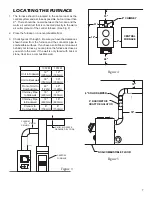
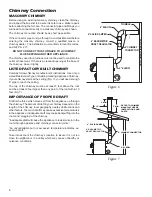
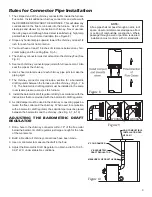
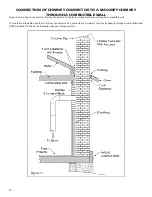
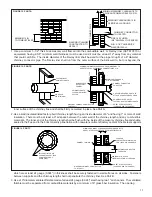
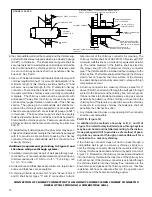


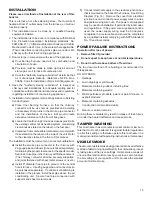

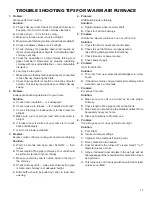
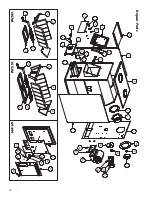

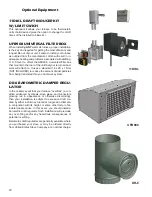
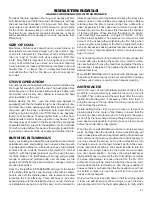
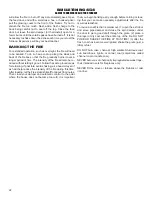
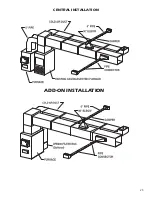
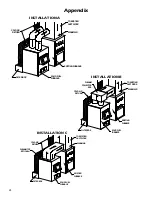
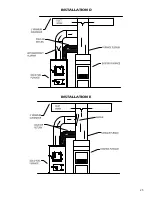
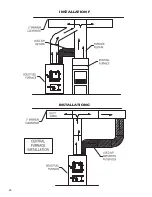
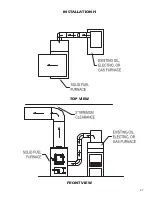

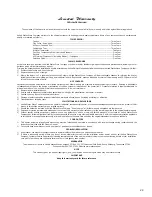
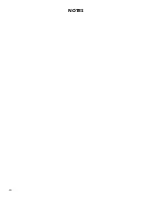
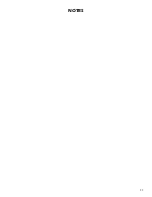
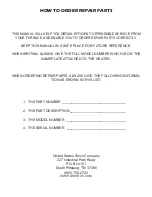











![Roberts Gorden Combat UHD[S] 150-400 Specifications preview](http://thumbs.mh-extra.com/thumbs/roberts-gorden/combat-uhd-s-150-400/combat-uhd-s-150-400_specifications_1469644-1.webp)





